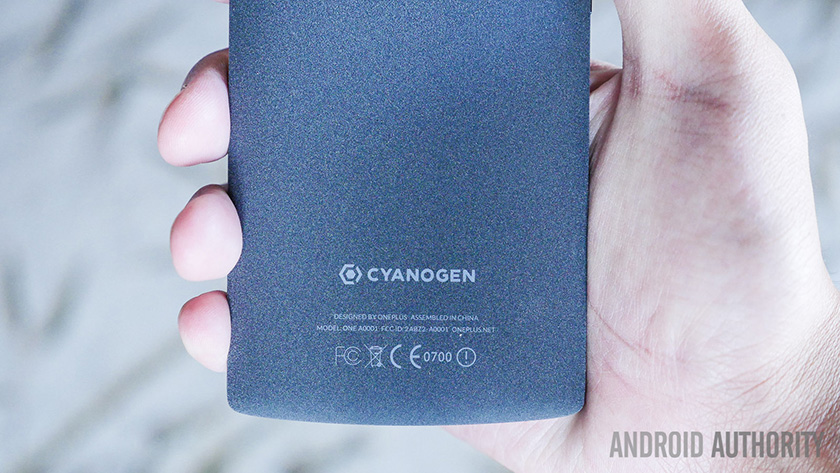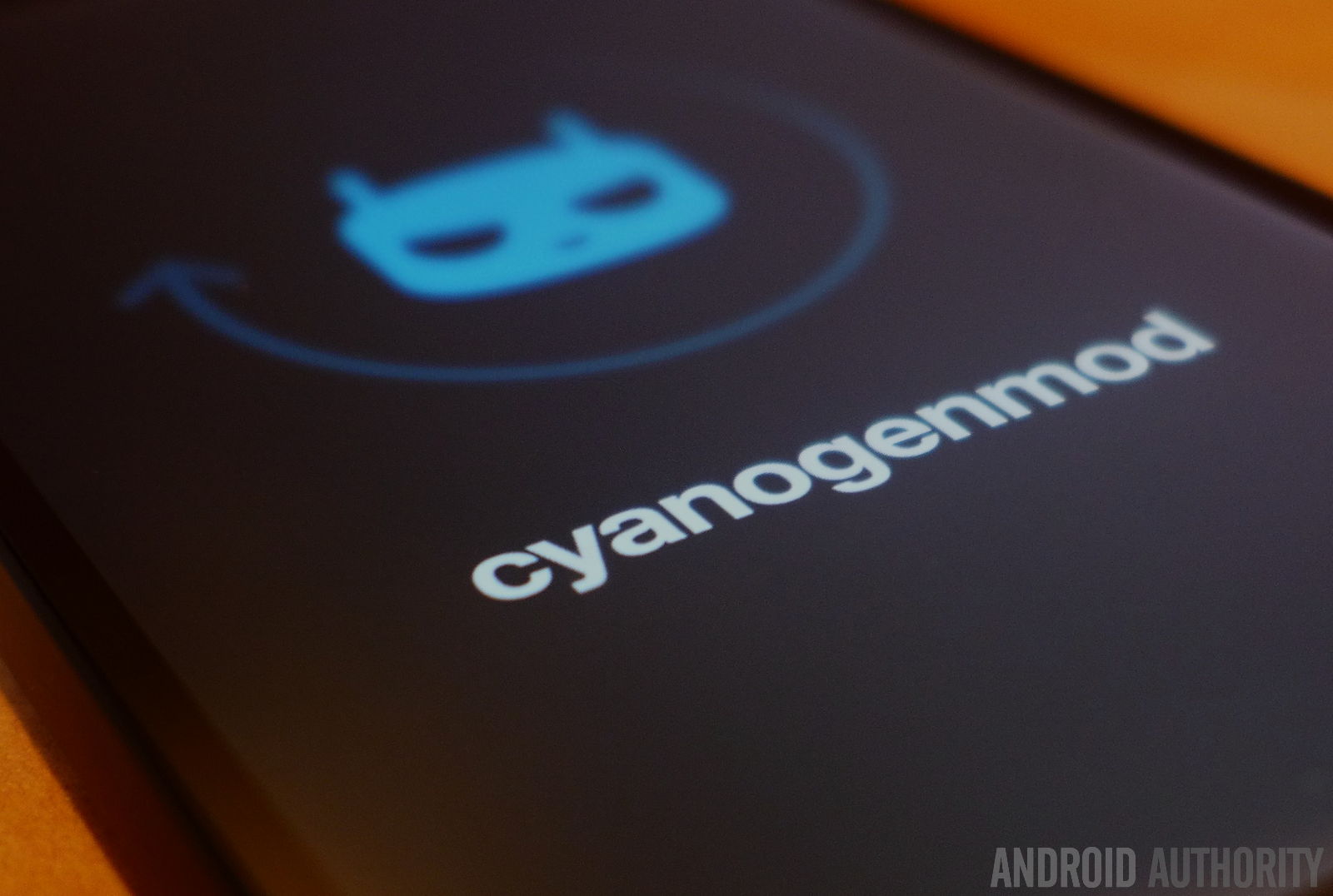Affiliate links on Android Authority may earn us a commission. Learn more.
Understanding the differences between CyanogenMod, Cyanogen OS & Cyanogen, Inc.
Published onJuly 7, 2016

Ask any Android user what they like most about Android and there’s a coin-toss of a chance they’ll say it’s the control and customizability. This is something that you just don’t get with Android’s competitors no matter how much jailbreaking or unlocking you do.
Of course, there’s more to Android than personalization. Beneath the skins, root mods, and tweaks is a powerful mobile operating ecosystem that undoubtedly earns the “smart” in “smartphone”. But Android has also been a template for countless custom ROMs that have been created over the years, each offering its own unique interpretation of the beloved OS and some innovative features while remaining mostly true to what makes Android… well, Android.
Here’s another exercise: Ask any Android user to name the first custom Android ROM that comes to mind. Chances are you’d hear the name of what has remained one of the most popular ROMs in almost a decade: CyanogenMod. It’s also possible you’d hear Cyanogen OS from someone who’s less knowledgeable of the difference, or perhaps Cyanogen, Inc. from someone trying to score name-dropping points. There’s no denying that there’s a common thread between CyanogenMod, Cyanogen OS, and Cyanogen, Inc., but the three are, in fact, different entities. Fortunately, that’s exactly what we’ll be discussing during today’s impromptu lecture.
So take out some paper and a pencil, spit out that gum, and join me as we hash out the very long, tumultuous, complicated history — Psst… It’s really not that complicated. — of CyanogenMod, Cyanogen OS, and Cyanogen, Inc.

Dawn of the mod

It was in the third quarter of 2008 when the first device running Google’s Android operating system was commercially released. Released just over a year after the wildly successful iPhone, the T-Mobile G1 — or the HTCDream outside the U.S. and Europe — was only moderately popular as a smartphone. Users were somewhat unimpressed with the Android operating system; however, when someone realized you could gain privileged control of the Linux-based system through a process we now call rooting, the popularity of both Android and the T-Mobile G1 exploded.
The T-Mobile G1 is the genesis of what Android stands for today
The JesusFreke developer eventually stopped working on the firmware and referred his fanbase to Steve Kondik. Steve Kondik, at the time, went by the handle “Cyanogen” and worked on an enhanced version of JesusFreke’s custom builds. The product of JesusFreke and Cyanogen’s input was the original iteration of CyanogenMod.
CyanogenMod became immensely popular. It had an extensive fanbase and a community of developers called Team Douche who continued refining the firmware. In a matter of months, the list of devices on which CyanogenMod could be run grew from one to dozens. Development of CyanogenMod continues today with most new devices getting their own special builds of CyanogenMod. This means anybody can keep using the firmware no matter which device they may be carrying.
CyanogenMod does a lot of things vanilla Android can't

However, the feature that could be said to characterize CyanogenMod the most is really more like the philosophy behind the CyanogenMod firmware: choice. Whereas most handsets running Android will surely have a number of pre-installed applications you might never use, CyanogenMod gives you complete control of what is and isn’t installed on your phone. Don’t want Google Play Music? You have the choice not to install it, or to uninstall it if it’s already there. It’s a much greater level of freedom than what you’d get with regular Android and why CyanogenMod has such a loyal following.
The developers responsible for CyanogenMod have done more than just create an alternate flavor of Android
The developers responsible for CyanogenMod have done more than just create an alternate flavor of Android. By creating CyanogenMod, they changed the way that many people, especially those in the industry, viewed software created by third parties. Before CyanogenMod, the assumption was if you wanted your device to function reliably or if you wanted to be able to use all its capabilities, you couldn’t use anything but pure, unadulterated Android. There was also worry that installing CyanogenMod made devices insecure. But the quality of CyanogenMod and the unquestionable power it can add to a device has completely changed perceptions of custom software.
Cyanogen goes commercial

Since its creation, CyanogenMod has continued to gain more followers and more developers year after year. It’s an open-source project, which means that virtually anyone can contribute to the operating system, which has been a major contributor to its growth.
[related_videos align=”right” type=”custom” videos=”635443,628468,412368,379414″]But as CyanogenMod has gained popularity, there have been other companies — Google and Microsoft and others — who have tried to buy CyanogenMod, presumably in hope of assimilating the firmware’s loyal devotees. Instead of selling, the developers behind CyanogenMod created a commercial version of the firmware now known as Cyanogen OS. You may have heard of Cyanogen OS in the past – it’s the firmware that comes pre-installed on a number of devices from smaller OEMs. The most well-known of these devices is probably the OnePlus One that launched with a version called CyanogenMod 11S. However, the developers in charge needed to create a divide between CyanogenMod (the open source project) and CyanogenMod (the version that came pre-installed on some Android phones).
Enter: Cyanogen OS. Simply put, Cyanogen OS is the name of the firmware that would come pre-installed on various Android phones, and CyanogenMod is the name of the community-driven open source project.
Essentially, the commercial version was created so that Cyanogen OS could have more control over the firmware and the software pre-installed on it, without compromising what makes CyanogenMod so great in the first place, which is being able to eliminate bloat, streamlining the Android operating system, and letting a device run at its full potential.
Not a ‘what’, but a ‘who’

We’ve discussed CyanogenMod and Cyanogen OS, which leaves Cyanogen, Inc. And this is the easiest one of all to understand because it’s the company behind the operating system.
In those first days of CyanogenMod, discussing the developers responsible for creating the firmware was as simple as discussing specific people like JesusFreke and Cyanogen. Since then, there have been countless other developers to contribute to CyanogenMod, even though the firmware technically belongs to Steve Kondik and Cyanogen, Inc., the company he co-founded in 2012. You might say the purpose of Cyanogen, Inc. is to monetize or commercialize CyanogenMod, and from those efforts Cyanogen OS was born. By all indications, Cyanogen, Inc. will proceed with Cyanogen OS as a commercial third-party OS that’s separate from CyanogenMod. Make no mistake that both iterations of the Cyanogen vision will continue to be major players in the Android space.
Let’s review: CyanogenMod is the community-driven and much-beloved custom ROM based on Android. Cyanogen OS is a more commercial version of CyanogenMod and is typically available as the pre-installed operating system on devices made (at least so far) by smaller OEMs. The whole operation is overseen by Cyanogen, Inc., which is the company created and run by Steve Kondik, AKA Cyanogen.
And now for the most important question of all.
Why CyanogenMod?

For most people, regular ‘ole Android is a perfectly capable operating system that can meet all their needs. While its versatility definitely makes Android impressive, that’s not what makes it so beloved. It’s the potential that Android has to adapt not just to your needs, but your wants. In many ways, CyanogenMod actualizes the potential of Android as well as the potential of your mobile device.
The people who oversee the evolution of CyanogenMod have worked at Samsung, at Sprint, at Qualcomm, or been key players in the development of Android itself. In other words, these are people who know tech, use tech, and know how they want their tech to perform. Additionally, CyanogenMod benefits from its vast and knowledgeable base of developers that have contributed directly and intimately to the firmware. The result is a level of customization surpassing that of stock Android, which is already a very customizable OS. You also get enhancements of virtually every aspect of the Android ecosystem, from refined audio to more precise voice search to powerful built-in productivity tools. But there’s much more to CyanogenMod than customization and performance: It’s every bit as secure as stock Android, if not even more secure.
So the next time you’re trying to explain your Android loyalty to an iNaysayer, you can cite CyanogenMod as one of many ways in which you can actualize the potential of an Android device.